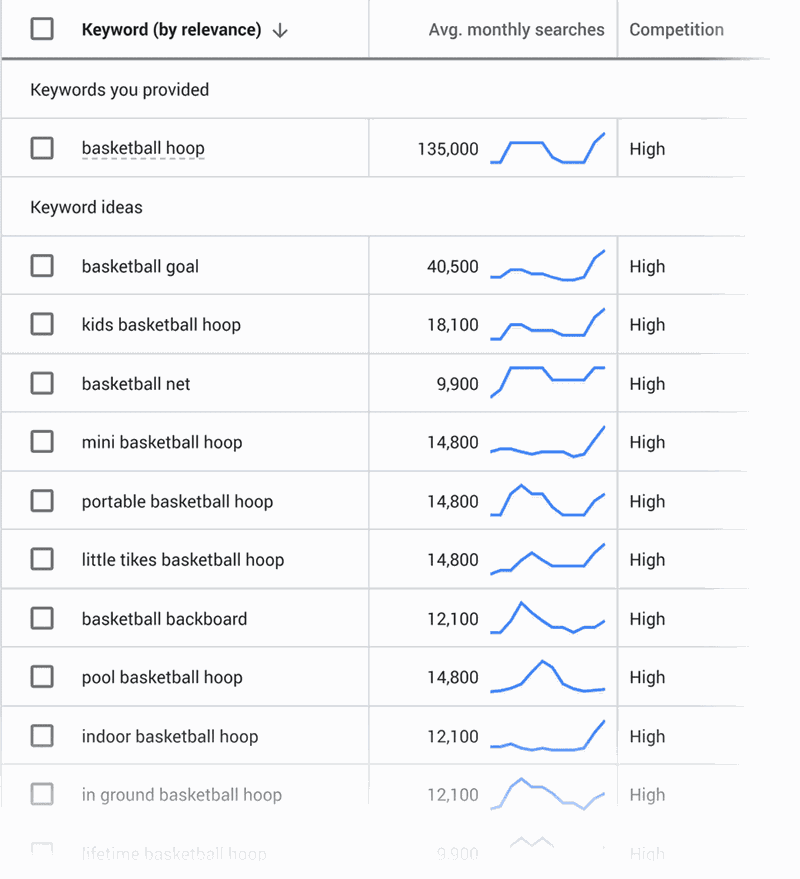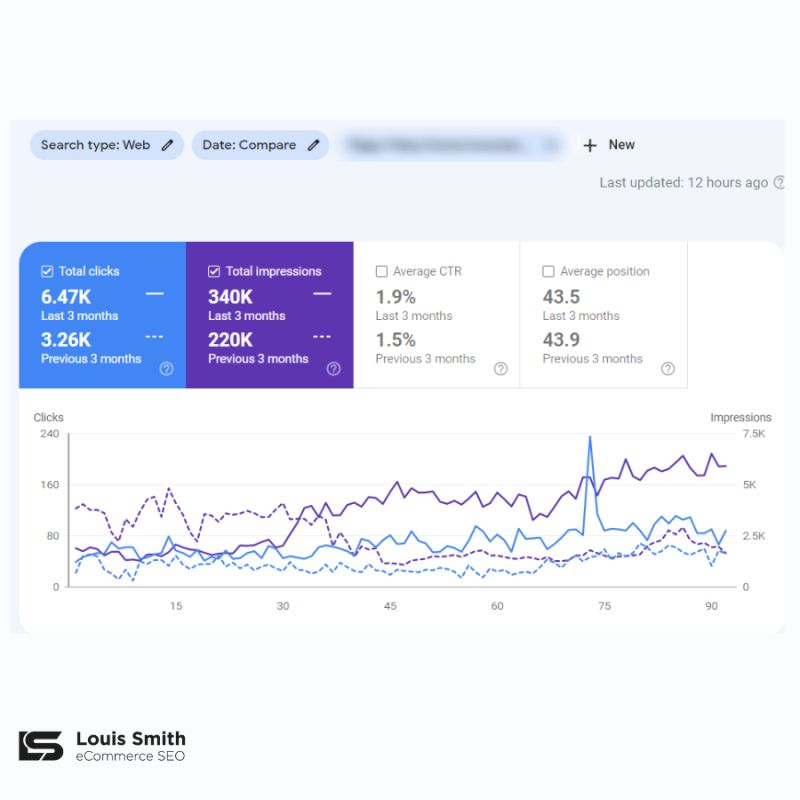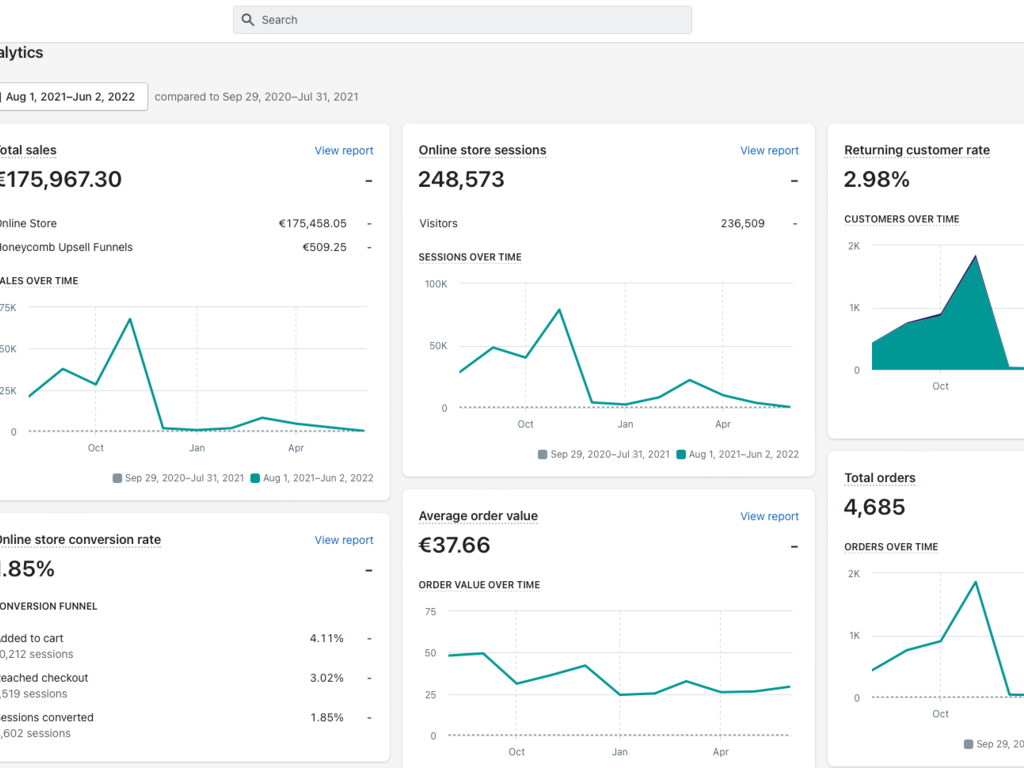In the world of e-commerce, driving traffic to your website and converting those visitors into customers is the key to success. To achieve this, you need an effective product page system that not only attracts the right audience but also convinces them to make a purchase. In this advanced guide, we will explore a 3-step product page system that can significantly increase your traffic and conversions.
By leveraging customer-driven keywords, implementing a customer-focused keyword strategy, and optimizing your conversions, you can propel your e-commerce business to new heights.
Step 1: Finding Your High-Converting Customer-Driven Keywords for E-commerce

To successfully find high-converting customer-driven keywords for your e-commerce business, you need to utilize data-driven insights and advanced techniques.
Here’s a step-by-step guide on how to accomplish this:
A. Start with Google Search Console (GSC):
- Log in to your Google Search Console account and navigate to the “Performance” section.
- Select the desired date range to analyze the performance of your website.
B. Analyze the Queries Report:
- In the “Performance” section, click on the “Queries” tab to access the queries report.
- This report displays the keywords or search queries that users have used to find your website.
C. Filter and Export the Data:
- To focus on product-related keywords, apply filters to the queries report.
- Filter by including relevant terms such as “product,” “buy,” or specific product names.
- Export the filtered data from GSC to Google Sheets for further analysis.
D. Utilize Google Sheets for Data Manipulation:
- Open the exported data in Google Sheets.
- Use built-in functions and formulas to manipulate the data for better insights.
- For example, you can calculate the click-through rate (CTR) or sort the keywords based on impressions or clicks.
E. Identify High-Converting Keywords:
- Look for keywords with a high click-through rate (CTR) and a significant number of clicks.
- Focus on keywords that are directly related to your products or services.
- Consider keywords that have a relatively low competition level, making it easier to rank higher in search results.
F. Explore Long-Tail Keywords:
- Long-tail keywords are specific, detailed search queries that often indicate strong purchase intent.
- Analyze the queries report for long-tail keywords relevant to your products.
- These keywords might include specific product features, variations, or size-related searches.
G. Conduct Competitor Analysis:
- Identify your top competitors in the industry.
- Use tools like SEMrush or Ahrefs to analyze their organic keyword rankings.
- Look for keywords that your competitors are successfully ranking for and consider incorporating them into your strategy.
F. Leverage Keyword Research Tools:
- Supplement your findings from Google Search Console with keyword research tools.
- Tools like Google Keyword Planner, Moz Keyword Explorer, or Ubersuggest can provide additional keyword ideas and search volume data.
- Look for keywords that align with your products and have a good balance of search volume and competition.
G. Refine Your Keyword List:
Consolidate the keywords you have gathered from different sources.
Prioritize keywords with high search volume, low competition, and strong relevance to your products.
Group similar keywords together for easier categorization and optimization.
H. Implement and Monitor:
- Incorporate the identified high-converting customer-driven keywords into your product pages, meta tags, headings, and content.
- Monitor the performance of the optimized pages in terms of rankings, traffic, and conversions.
- Continuously refine your keyword strategy based on the insights gained from ongoing monitoring and analysis.
Step 2: Use the “Customer-Focused Keyword Strategy” to Drive Traffic and Sales

Now that you have identified the high-converting customer-driven keywords, it’s time to develop a customer-focused keyword strategy that will drive targeted traffic to your product pages.
By understanding the mindset of customers searching for sizes and leveraging their familiarity with your product, you can effectively increase conversions.
Let’s explore this strategy in detail:
1. Understanding the mindset of customers searching for sizes
Customers who are actively searching for sizes are typically in the final stages of the buying process. They have already identified their need for a specific product and are now focused on finding the right size.
By targeting these customers, you can tap into their readiness to make a purchase.
Here are some advanced techniques to consider:
A. Size-specific landing pages:
Create dedicated landing pages for each size variant of your products. Optimize these pages with relevant size keywords and provide detailed information about the specific size options available. This helps customers quickly find the size they need and increases the likelihood of conversion.
B. Advanced Technique :
Implement search filters on your e-commerce website that allow customers to easily filter products based on size. This saves their time and enhances their user experience, increasing the chances of them finding the right product and making a purchase.
2. Leveraging your customers’ familiarity with your product
One advantage of targeting size-related keywords is that your customers already have some level of familiarity with your product. They know what they are looking for and are actively seeking a product that matches their size requirements. To leverage this familiarity and boost conversions, consider the following advanced strategies:
A. Size-specific recommendations: Use personalized recommendation algorithms to suggest products in the customer’s desired size. By showcasing relevant options that meet their size preferences, you can make the shopping experience more convenient and increase the chances of a successful sale.
B. Size-specific social proof: Incorporate customer reviews and testimonials that specifically mention the product’s size. This helps potential customers gain confidence in their purchasing decision by seeing positive feedback from others who have purchased the product in the desired size.
3. Matching customer expectations with size attributes
To optimize conversions, it’s crucial to meet and exceed customer expectations when it comes to size attributes. Here are some advanced techniques to ensure you provide a seamless and satisfactory experience:
A. Detailed size charts and measurements: Include comprehensive size charts and measurements for each product to help customers make accurate size selections. Consider providing visual guides and clear explanations to make it easier for customers to understand and choose the right size.
B. Interactive size selection tools: Implement interactive tools on your product pages that allow customers to input their measurements or select specific body types to receive personalized size recommendations. This level of customization enhances the customer experience and boosts confidence in their purchase decision.
4. Increasing conversions by targeting bottom-of-funnel customers
By focusing on customers who are at the bottom of the sales funnel, you can significantly increase your conversion rates. These customers have already conducted extensive research and are actively searching for products to fulfill their specific size requirements.
To effectively target bottom-of-funnel customers, consider these advanced strategies:
A. Size-specific retargeting campaigns: Implement retargeting campaigns that specifically target customers who have previously shown interest in a particular size variant of your product. Show them customized ads highlighting the availability of their desired size to remind them and entice them to complete their purchase.
B. Size-specific incentives and offers: Create exclusive offers or incentives that are specific to certain size variants of your products. This not only encourages customers to make a purchase but also creates a sense of urgency and exclusivity.
Step 03: Optimizing Your Conversions Today

Now that you have identified high-converting customer-driven keywords and implemented a customer-focused keyword strategy, it’s time to focus on optimizing your product pages for maximum conversions.
Here’s a step-by-step guide on how to do it:
A. Selecting a high-value product to focus on
Start by identifying a high-value product that has the potential for increased conversions. Look for products that are popular, have high-profit margins, or are in high demand. By focusing your optimization efforts on these products, you can maximize the impact on your overall sales.
Example: Let’s say you run an e-commerce store selling athletic apparel, and one of your top-selling products is a premium running shoe. This product has a high-profit margin and is frequently sought after by customers.
B. Incorporating size keywords in the product title
To make your product page more visible and relevant to potential customers, include size keywords in the product title. This allows search engines like Google to display your product with a rich snippet, providing users with instant information about the available sizes.
Example: Instead of just titling your product as “Premium Running Shoe,” optimize it to “Premium Running Shoe – Size 9, 10, 11 – Available in Multiple Colors.” This way, customers searching for specific sizes will immediately see that your product caters to their needs.
C. Conducting a competitor analysis for product queries
To stay ahead of the competition, it’s crucial to evaluate how your competitors are performing in the same product queries. Analyze the search engine results page (SERP) for relevant keywords and identify your competitors’ ranking positions, their product descriptions, and any unique selling propositions (USPs) they highlight.
Example: Search for “premium running shoe size 9” and analyze the top-ranking competitors. Note their product titles, descriptions, pricing, and any other features they emphasize. This analysis will help you understand the current landscape and identify opportunities to differentiate your product.
D. Optimizing your product to stand out as the best Unique Selling Proposition (USP)
Now that you have gathered insights about your competitors, it’s time to optimize your product page to make it the best USP in the market. Here are some advanced strategies to consider:
- Compelling product description: Craft a persuasive and informative product description that highlights the unique features, benefits, and quality of your product. Use customer testimonials, social proof, and detailed specifications to build trust and convince potential buyers.
- High-quality product imagery: Invest in professional product photography that showcases your product from various angles. High-resolution images, zoom functionality, and lifestyle shots can significantly enhance the visual appeal and help customers make informed purchasing decisions.
- Clear and intuitive user experience (UX): Ensure that your product page has a clean design, easy navigation, and a streamlined checkout process. Minimize distractions, optimize page load speed, and include intuitive call-to-action buttons to guide users towards making a purchase.
- Personalization and customization options: Offer personalized recommendations based on customers’ size preferences and previous purchases. Enable customization features that allow customers to choose specific attributes, such as color or fit, to create a sense of ownership and increase conversion rates.
- Social proof and reviews: Showcase customer reviews, ratings, and testimonials prominently on your product page. Positive social proof can instill confidence in potential buyers and alleviate any concerns they may have about sizing or product quality.
By implementing these optimization strategies, you can position your product page as the best option in the market, compelling customers to choose your product over competitors.
Conclusion
By following this 3-step product page system, you can effectively increase traffic and conversions for your e-commerce store.
FAQs:
Export this data to Google Sheets, filter URLs by product, and analyze size-related product searches to identify keywords that are likely to lead to conversions.
By optimizing your product pages with size keywords and providing detailed size information, you can attract customers who are ready to make a purchase and increase your chances of conversion.
This improves visibility and increases the likelihood of attracting customers who are searching for specific sizes.
By analyzing their rankings, product descriptions, pricing, and unique selling propositions (USPs), you can identify opportunities to differentiate your product and optimize your own product page to stand out in the market.
By providing valuable information, building trust, and offering a seamless shopping experience, you can enhance the likelihood of converting visitors into satisfied customers.


